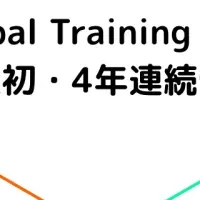
Projected Growth of the Digital English Language Learning Market: An Analysis for 2025 to 2029
Overview of the Digital English Language Learning Market
The global digital English language learning market is projected to see substantial growth over the coming years, with an estimated increase of approximately USD 39.46 billion from 2024 to 2029. This upsurge, as forecasted by Technavio, reflects a robust compound annual growth rate (CAGR) of 24.5% within the specified period.
Market Segmentation
Technavio's analysis segments the market based on various criteria, including end-users, deployment models, and geographical regions. The major categories identified are:
1. End-User Segmentation:
- Non-Academic Learners: This includes corporate professionals who need English proficiency to enhance their international business communication.
- Academic Learners: Encompassing students and educational institutions that utilize English language courses to meet academic requirements.
2. Deployment Types:
- On-Premises: Traditional learning environments that continue to be relevant and are often preferred by certain institutions.
- Cloud-Based: A preferred option due to its flexibility and accessibility from various devices, making learning more convenient for users worldwide.
3. Geographical Distribution:
- Key regions featured in the report include North America, Europe, Asia-Pacific (APAC), South America, and the Middle East & Africa, with highlights on leading countries such as the United States, China, the United Kingdom, and India among others.
Demand Drivers
The corporate sector plays a pivotal role in the expansion of the digital English language learning market. The necessity for seamless communication in diverse, multicultural workplaces has triggered an uptick in demand for English language courses tailored for non-academic learners. This shift is driven by the growing trend of online communication tools, which require individuals to possess proficient English language skills.
Moreover, standardized assessments such as IELTS and TOEFL have significantly intensified the demand for English language courses as they are globally recognized measures of language proficiency. The growing versatility of educational offerings fueled by technological advancements allows for self-paced learning through mobile applications and blended learning techniques, combining traditional and digital learning methods.
E-Learning Innovations
As technology continues to advance, the e-learning landscape is rapidly evolving, allowing new opportunities for effective English language learning. This includes:
- - Adaptive Learning Technologies: These systems personalize the learning experience, adapting content to suit individual learner’s needs and pace.
- - Interactivity and Gamification: Applications that incorporate game-like features keep users engaged and enhance retention rates, making learning both effective and enjoyable.
- - Cloud-Based Learning Solutions: Ensuring access from anywhere, these solutions have made learning more democratic, opening doors for a wider audience.
- - Real-Time Feedback Mechanisms: These systems provide ongoing assessment of learner performance, allowing for real-time adjustments and enhancements.
- - Blended Learning Models: This innovative approach melds classroom interaction with digital learning, creating a richer educational experience.
Future Outlook
The market is likely to continue its upward trajectory due to the dual forces of increasing globalization and the need for effective communication across all sectors, especially in business. Added to this mix is the continual proliferation of digital technologies that offer learners more ways to engage with the English language. The incorporation of microlearning techniques and flexible learning models further enhances the market's appeal, fostering a robust environment for ongoing growth.
In summary, the digital English language learning market is on the verge of a significant transformation, driven by changing communication needs and a diversified approach to learning. With the projections provided by Technavio, stakeholders are urged to capitalize on these trends to optimize engagement and reach their target audiences effectively.
Topics Consumer Technology)










【About Using Articles】
You can freely use the title and article content by linking to the page where the article is posted.
※ Images cannot be used.
【About Links】
Links are free to use.